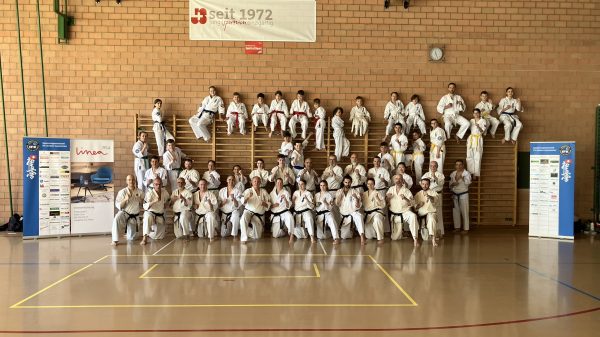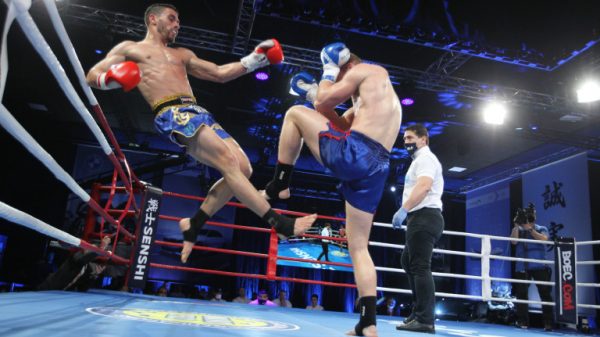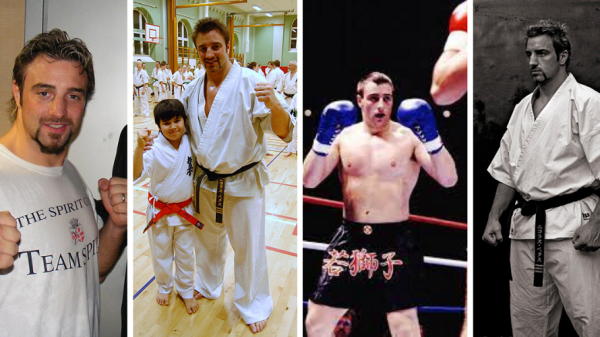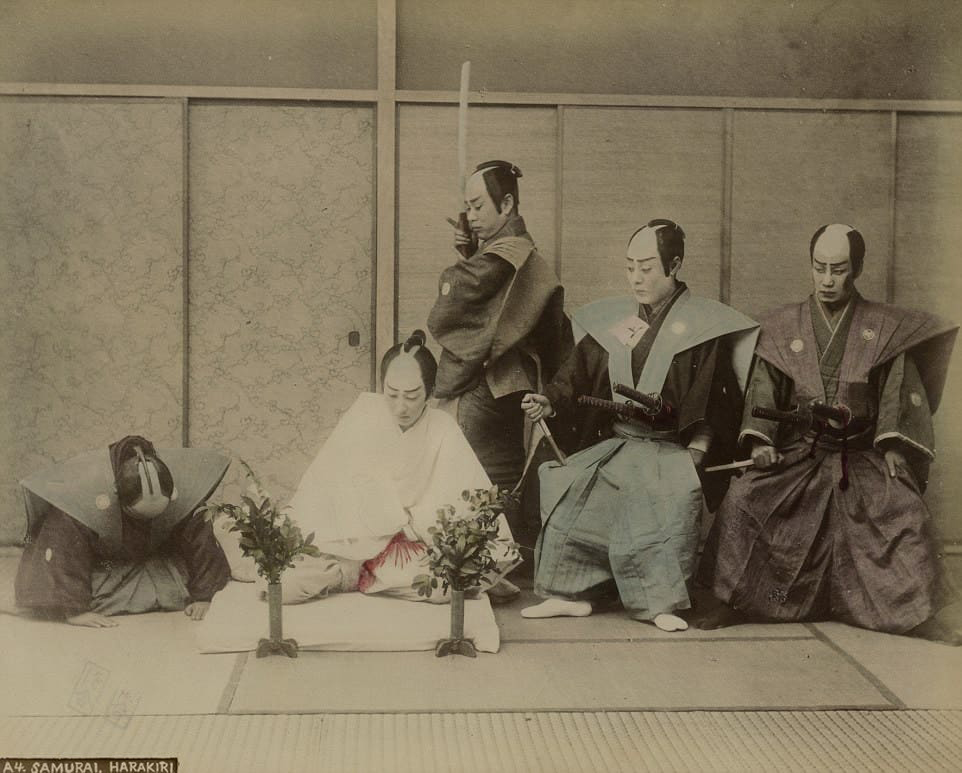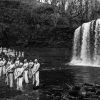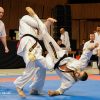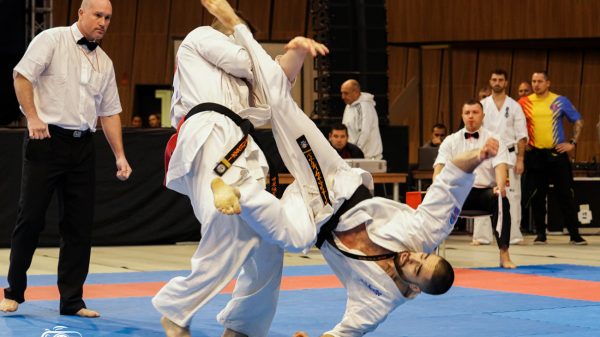The code of honor is based on the assumption that honor is the most valuable characteristic of every person. Honor is the external face of a dignified human being. The right to a person’s dignity is one of the basic human rights and equally belongs to every man, no matter his or her age, sex, class, race etc.
Honor (lat. honos, gloria) is an abstract term that signifies the feelings of worth and respect which, in turn, affects the social position and self-evaluation of an individual or family, society, military or military unit, country, etc. So, to those individuals or their families, certain social communities, military or military units, military or civil schools, certain groups of people, countries, etc. a value or reputation in society is assigned in line with how they perform certain tasks defined by the code of honor, as well as the moral code of the community as a whole.
As early as some martial arts were created, no matter the country of their origin, a certain code of honor was deeply rooted in their basic moral principles. Accepting that code of honor, an individual would accept certain standards of behavior, as well as the ideals of the character that was necessary for a member of such a group of people, i.e. that kind of people that took up a certain martial art.
And so, in different historical periods, codes of honor were made in different countries across the world. Many of those codes of honor became widely known.
In Ancient Greece, the Spartans had their code of honor, and numerous others belonged to certain Roman legions, Alexander The Great’s units, Genghis Khan’s soldiers, and many more. One of the most famous codes of honor is surely the Japanese code of honor named “Bushido” which many Japanese warriors, samurais, abided by. Although this Japanese code of honor is the most famous one, many others are also very well-known and we will mention some of them.
One of the older codes of honor is the famous French code of the warrior class – Noblesse Oblige (nobility obliges, requirements set for knights) which was followed by knights as early as the 13th century. The German code of honor called Gemut is also well-known and it is said to be followed by the German knighthood during the Middle Ages. One of the most famous ones is definitely the English Gentleman’s Code and the French Gentilhomme which were mostly military and patrician codes of honor that appeared around the 16th century. One of the more popular knight codes of honor is the Italian code called Cavalleria. Knightly codes of honor bore similar names- Codigo de Caballero and, sometime later, Honor de Cavalleria which was widespread in Spain. During the Middle Ages, in some mid-European countries, the code of honor called Fidei et Honoris (a certain type of code of model behavior and appropriate conduct) was used. On its basis, it respected the principle of integrity and honor. Those were all codes consisting of moral principles by which knights of various European countries needed to abide by.
Certain rules of behavior, i.e. codes of honor existed in the 18th and 19th centuries. One of them was, for example, the German code of officers’ behavior called the Grey Book which regulated the rules of behavior in sword or gun duels. France was a country known for its duels based on insulting a man’s honor. The famous commander Napoleon Bonaparte founded the French order of merit, Legion of Honour, as one of the first orders of such kind. During the 19thand 20th century, unwritten codes of honor existed in the American Wild West and its population lived in line with them. Those codes were known as The Cowboy Code or The Code of the West.
It is less known that one of the strictest codes of honor was implemented by pirates in the 17th and 18th centuries. It was called the Code of the Brothers of the Shore. In 1889 in America, the ethical code of honor for vagrants was established – The Hobo Ethical Code. It became famous because of certain symbols that the vagrants used. Some criminal groups have also made their codes of honor popular, for example, the Chinese Triads have their own code, and the Japanese Yakuza have a different one. It is known among the Yakuza that, if dishonorable actions were made, they will chop off your pinky finger. One of the most famous codes in the world is the one followed by the Italian mafia. They have their own basic code of behavior called the Cosa Nostra (Engl. our thing, our way) and the code itself is known as Omerta.
Many abovementioned codes of honor were followed in Europe and they had a very strong influence on martial arts trainees, for example, on wrestlers, fencers, and boxers. Naturally, Eastern martial arts, especially Japanese martial arts, were greatly influenced by the Japanese code of honor – Bushido.
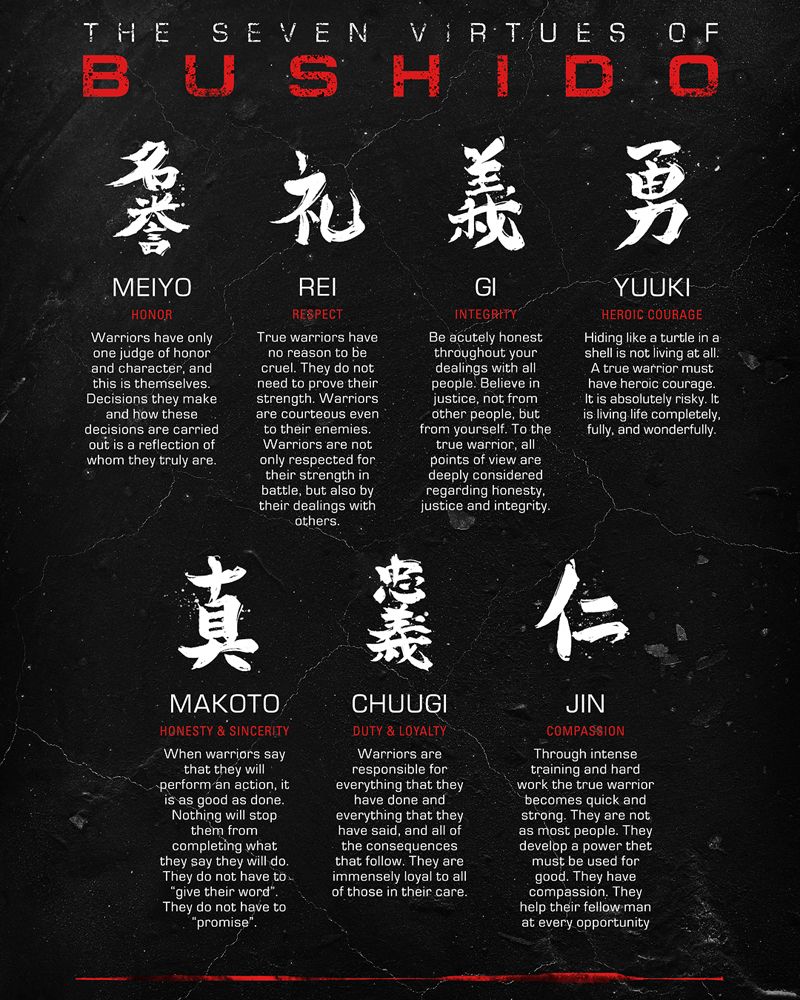
Bushido (bu – shi- do; bu= strong, strength; Bushi = warrior; do= path, way) or the warrior’s path (the path of the samurai) was an unwritten code of basic moral principles of the warrior class in Japan. Although the value system contained in the bushido code changed under various influences through the entire Japanese feudal period, its essence remained unchanged. Righteousness, honesty, bravery, kindness, honor, and modesty were always pointed out as the most important virtues of every perfect warrior. A special emphasis was given to the feeling of contempt towards death, whereas loyalty to your family, country, and master (ruler) represented the highest samurai obligation.
The samurai class appeared as an important power during the Heian period (794 – 1185 A.D.) and it was made up of representatives of the warrior class- buke. They gradually became the court’s official bodyguards. The name “samurai” was given to them from the word “samurau” which means “to serve, follow”. In the beginning, the name referred only to the soldiers who served their duty in the emperor’s palace. Later it signified all members of the warrior class. Their way of life differed quite a lot from the lives of other members of the court’s aristocracy. Because of frequent wars during the Kamakura (1192 – 1333 A.D.) and Ashikaga/ Muromachi (1338 – 1573 A.D.) period, cultivation of warrior skills and constant appraisal of bravery on the battlefield was demanded from them. Indifference towards death was taken over from Zen Buddhism once it was discovered that discarding life as an object of worship can offer a lot to the warrior. Buddhism brought faith to the permanence of fate, compliance with the unavoidable as well as brave stillness in danger. The honor was extremely appreciated, however, under the influence of Shintoism (an authentic Japanese religion), warriors gave a lot of importance to the origin and reputation of their families.
Making a simple mistake or losing honor led to the highest readiness to sacrifice oneself- the obligation to commit suicide (seppuku). It includes ritually cutting open one’s intestines (hara-kiri). This way of committing suicide is based on an old Japanese anatomical belief according to which the point just above the navel (Jap. Hara) is the center of a person’s soul and feelings. The basic guiding force for committing seppuku was “I will open up the place where my soul resides and show what it’s like. You can see for yourself if it is corrupt or pure.”
The warrior class’s learning program was mostly based on the following skills: fencing, archery, riding skills, the usage of a spear, war tactics, calligraphy, ethics, literature, history, and, especially, mastering and practicing jujutsu or the javara skill. As a martial art, jujutsu was especially valued because, in comparison to wrestling, it wasn’t based on physical strength and it differed from other attacking techniques because it didn’t involve weapons. The bushido code was respected throughout the entire training and, straight from the beginning, it was a basic learning component in all martial arts that the warriors had to pass. Although it was written down, its unwritten rules were respected and followed.
In the was that martial arts developed through history, the knowledge about certain martial arts was passed on from one teacher to their students, i.e. from one generation to the other. Naturally, each martial arts master passed the unwritten code of honor rules to his students as well.
The fighting techniques that were used by warriors in feudal Japan are called “Bugei”. According to some martial arts experts, the majority of those basic techniques were developed in feudal times and there are around 40 of them. Those fighting techniques, Bugei, were practiced in war and that was their basic characteristic and usage. In other words, Bugei were warrior techniques in Old Japan. Individual warrior techniques of the Bugei use the word “Jutsu” (skill, artistry) and, because of their basic use, respecting the Bushido code was implied and encouraged in war periods.
The well-known martial arts master Jigoro Kano (1860 – 1938) practiced a number of different styles, i.e. schools of Jutsu during his youth. When he became an instructor (teacher), he saw that his school’s name didn’t quite different from other schools that were active at that time. He thought about it and in 1898 come up with the idea to call his style “Judo”. Master Kano wanted to use the name to preserve a certain traditional term, for example, Budo or Bushido, but still to avoid the skill from having its basic warrior purpose and the title “Jutsu”. Within this new name, the Judo martial art encompassed the mode of training and fighting principle which, in turn, decreased its basic purpose of a warrior skill and the need to strictly adhere to the Bushido code of honor. This way master Kano could propagate the style to different profiles and professions and, at the same time, avoid the Judo style of fighting to be used solely for the purposes of the army or the police.
This is how, Judo was gradually developed from the Ju-Jutsu warrior skill (ju=tenderly, do= path or way). It is a mode of training of certain techniques and principles of fighting which grew step by step and changed its purpose. Today, it is mainly a sport. Seeing that the Judo martial art has a successful developmental path, some other famous martial arts masters took on the same principle. The well-known martial arts master and the founder of the Karate martial art, Gichin Funakoshi (1868 – 1957), called his style Karate-Jutsu as early as 1926. Ten years later, in 1936, he changed it to Karate-Do. Today, this martial arts is turning more and more into a sport and it is usually called just Karate.
Another great martial arts master, Morihei Ueshiba (1883 – 1969) who, during his youth, trained different forms of the Jutsu skills, in its very beginning called his style Aiki-Ry or Aiki-Jutsu. At the end of 1942, he changed its name to Aikido which is a term that almost everyone knows today. The name became popular at the beginning of 1948.
As soon as World War II was over, Japan faced many changes at the time, many of which affected martial arts. Many martial arts masters served as instructors to various officers in the Japanese military during the war or were members of the army themselves. Because of that, once the war was over, they wanted to show the world their peaceful viewpoints and not the warrior purpose of their martial arts techniques. This is why they propagated the “Do” way of practicing martial arts and, so, gradually decreasing their initial purpose and meaning of being a warrior skill. Also, they gradually diminished the effect that the Bushido code of honor had on martial arts. Finally, the Jutsu style was more and more replaced by the Do mode of practice.
Many martial arts progressively changed their basic warrior purpose, i.e. the way they have approached training. Another change was made to their names, for example, Ken Jutsu= Kendo; Iai Jutsu=Iaido; So Jutsu=Sodo; Kyu Jutsu=Kyudo; Jo Jutsu= Jodo, etc. Even some different modes of fighting with weapons in Okinawa gradually changed their names to “Kobudo”. That kind of “Do” way of practice was accepted by many Korean martial arts, such as Hap Ki Do, Hwa Rang Do, Han Mu Do, Kumdo, Tang Soo Do, and, certainly the most famous one, Tae Kwon Do. Even the famous martial arts master and actor Bruce Lee picked the name Jeet Kune Do for his own style of fighting. The modes of practicing according to the Do principle were accepted by some other martial arts around the world. An example is the Vietnamese Viet Vo Dao or Quan Ki Do, Defendo or Wen-Do in Canada, or Zen Do Kan in Australia. The effect is also visible on the Indonesian Sindo as well as the Burmese Bando boxing.
Whether some martial arts masters would like to admit it or not, today the Do mode, i.e. the Do way of practicing martial arts, and its understanding are shifted towards sports and sports results than to the original martial art itself. It is even less pointed towards the warrior skill from which it originated. The code of honor is seldom mentioned because today’s sports have their own set of rules and fair play. And for the gross majority of sportspersons, that is enough. However, there are some smaller groups of masters that exist today which still respect and accept some of the rules of the Bushido code of honor. Certain “true” martial arts masters still live in the East or in the West today and they respect and abide by some of the life rules from that code of honor.
For those specific martial arts masters taking up a certain martial art is not merely a hobby or something they do in their free time. For them, it is not a sport and they do not practice it from a sports point of view. For them, it is strictly a martial art. Although some martial arts masters turn to it professionally, taking up the skill is not something they consider to be their main occupation. It represents a certain way of life which includes respecting the moral principles of certain codes of honor.
So, today in the West, you are able to come across martial arts masters who will tell you that the martial art of boxing is a noble skill. Some other martial arts masters will say that the martial art of wrestling or fencing is a skill that is taken up by gentlemen who respect the code of honor. Although the era of samurai has long passed, in today’s Japan you can still find martial arts masters who live by respecting the principles of the Bushido code of honor.
Nowadays, there are more people who think that the time of knights and samurai is over. There are those who believe that, in modern martial arts, and especially in martial sports, there is no longer a need or space for some of the codes of honor because they have their own rules and fair play. However, there still exists a number of martial arts masters who do not agree with that notion. Those masters are loyal to the old way of learning a certain martial art which says that, if someone doesn’t respect those unwritten rules and that specific code of honor, he will not be respected himself by the other masters of that skill.
No matter the country of origin of a certain martial art or a code of honor’s name which is cultivated there, the basic principles of those codes of honor are almost identical in the East and in the West. The person who practices it or a trainer or instructor who doesn’t live according to the moral principles of that code of honor is not and never will be the true master of that martial art.
Ancient samurai differed from other people of that time firstly because of the fact that they lived according to the Bushido code of honor. Today, when you ask a random officer who graduated from the famous military school, West Point, how does he differ from other people, his answer will always be – “by a certain code of honor”.
Those who think that the basic difference between exceptional martial arts masters is in the color or the way they wear a kimono, in the emblems on their kimonos or sports t-shirts, in the color of their belt or their title, in their great knowledge or performance of a certain technique, are wrong. When you ask today’s martial arts masters what is the basic thing that makes them different from other people or some other individuals who train martial arts, their answer will always be the same – “by the fact that we live in respect of the moral principles of the code of honor.”
Bushido, noblesse oblige, the chivalry code, the gentleman’s code, gamut, cavalleria, the cowboy code are for most people just some old names of certain customs from ancient history. For them, they are customs that they’ve heard of from old legends and tales about knights or samurai. Those customs were never written down or even clearly prescribed, but their rules are merely living in various historical legends.
For some other people, those are still unwritten rules of behavior. Their basic moral principles according to which they live. Those are unwritten rules by which their fathers and their fathers’ fathers abided by and, for them, it is a family tradition.
A true master and teacher of martial art will accept his student as someone who is a part of his family. By doing that, he will teach him the same thing he has learned from his father or teacher – to respect the unwritten rules of the code of honor. Moreover, he will show him with his own example how to live by respecting the moral principles of the code of honor.
Source: blackbeltmag.com


